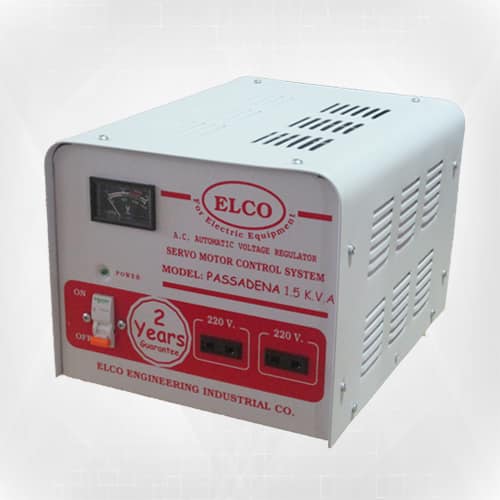How Stabilizer Protects Electric Devices?-Stabilizer is most useful for stabilizing the voltage. The stabilizer keeps the voltage within the operating range of the electrical equipment & protects the electrical equipment from damage.
Supply voltage to our homes depends on the region that we live in. You may have (110V AC) at your country and you may find (220V AC) in another country.
Did you ever asked yourself “What happens if you buy a device that operates with 110V, but my country just has a 220V?” … Simply you can buy a Stabilizer.
Therefore, today we are going to understand this important device aspect. We shall discuss the function of that device, how it works, its type. Also, we shall discuss how to select the suitable type of stabilizer for your application, So please stay tuned.
Function of Stabilizer
Stabilizer or as we can call it the Automatic Voltage Regulator is a very common device. We use a stabilizer to damp and absorb the shocks and fluctuations that come with the incoming power.

In most situations and all over the world you will not have the ideal incoming voltage (220V AC), due to the load variation (whatever where you are?). You may find the supplied voltage at sometimes (215V) and at another time (225V).
It could be later (230V), and that is not acceptable for some devices. The devices are apt to fail if operated at a voltage that is lower or more than (220V).
Therefore, using stabilizers in such situations is necessary to protect our devices.
To address the above question, you can use stabilizers to get any voltage according to your requirements. For example, if you have 220V and you want 110V you can just get a stabilizer that would give you this voltage.
How Stabilizer Works?
A voltage stabilizer works on the principle of a transformer. The primary winding receives the incoming power and secondary outputs voltage.
The internal circuit of a stabilizer consists of Transformer, rectifier unit, comparators, switching circuit, and relays.
The basic idea depends on, when there is a drop in incoming voltage, the Electromagnetic relays, will add more number of turns to the secondary winding, and that by its role would give you a higher voltage, which compensates the losses in output voltage.
When there is a rise in the incoming voltage, the reverse happens, and the voltage at the output side remains almost unchanged.
Thus stabilizer protects the electrical devices from damage.
Types of Voltage Stabilizer
- Relay Type Voltage Stabilizer
- Servo Controlled Voltage Stabilizer
- Static Voltage stabilizer
Steps of Selection of Appropriate Stabilizer
Voltage stabilizer sizing depends on the rating of equipment connected at the output of the stabilizer
- First, you have to measure the electric loads that stabilizer needs to maintain. You can get the power consumption by reading the data of the device or by measuring the current and calculate the power.
- You will find the power with (KW), assume the power factor at your home is (0.9), then you have to get the apparent power (KVA).
- Then you can buy a stabilizer that work with your loads. For home needs, 200VA, 300 VA, 500 VA, 1 KVA, 2 KVA, 3 KVA, 4 KVA, 5 KVA, 8 KVA and 10 KVA rated voltage stabilizers are suitable. For industrial and commercial purposes, we use high power rated servo stabilizers.
- Considering future expansion of the load, So determining total power rating requires possible future expansion, typically 20% more than actual power requirement in order to connect loads over the long run.
NOTE
It is always recommended to consider the true RMS voltage of the load.
Main aspects to consider when purchasing a stabilizer
- The range of the operating input voltage.
- Display indicators and High/Low cut off.
- Intelligent time delay.
- Diesel generator support.
- Preventing of the spike/surge voltages.
- Wall or floor mounting.
- The appliances that it can support.
Read More: